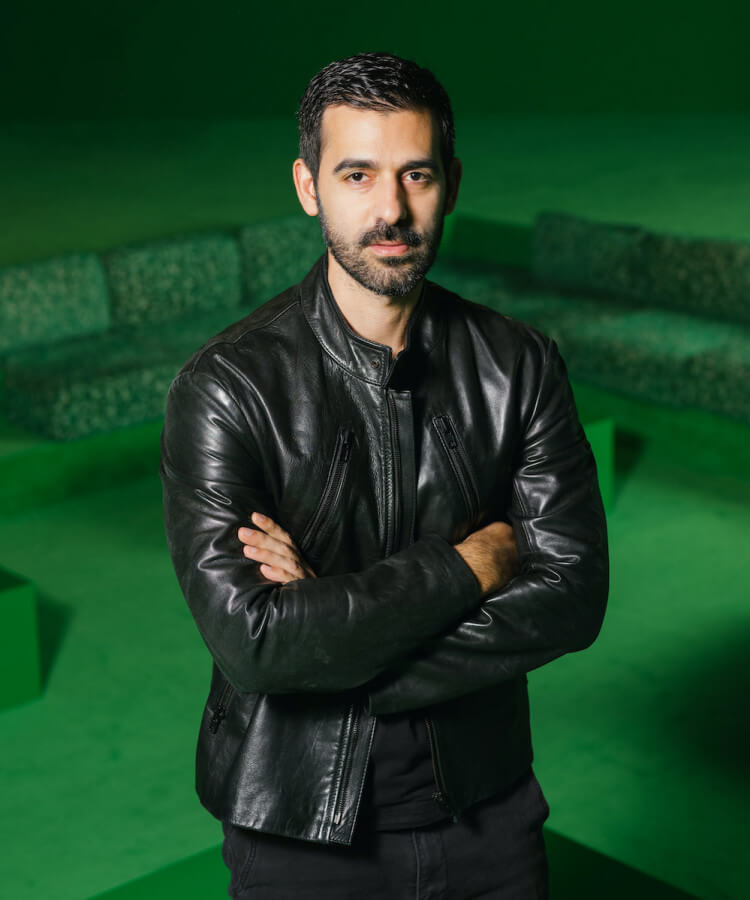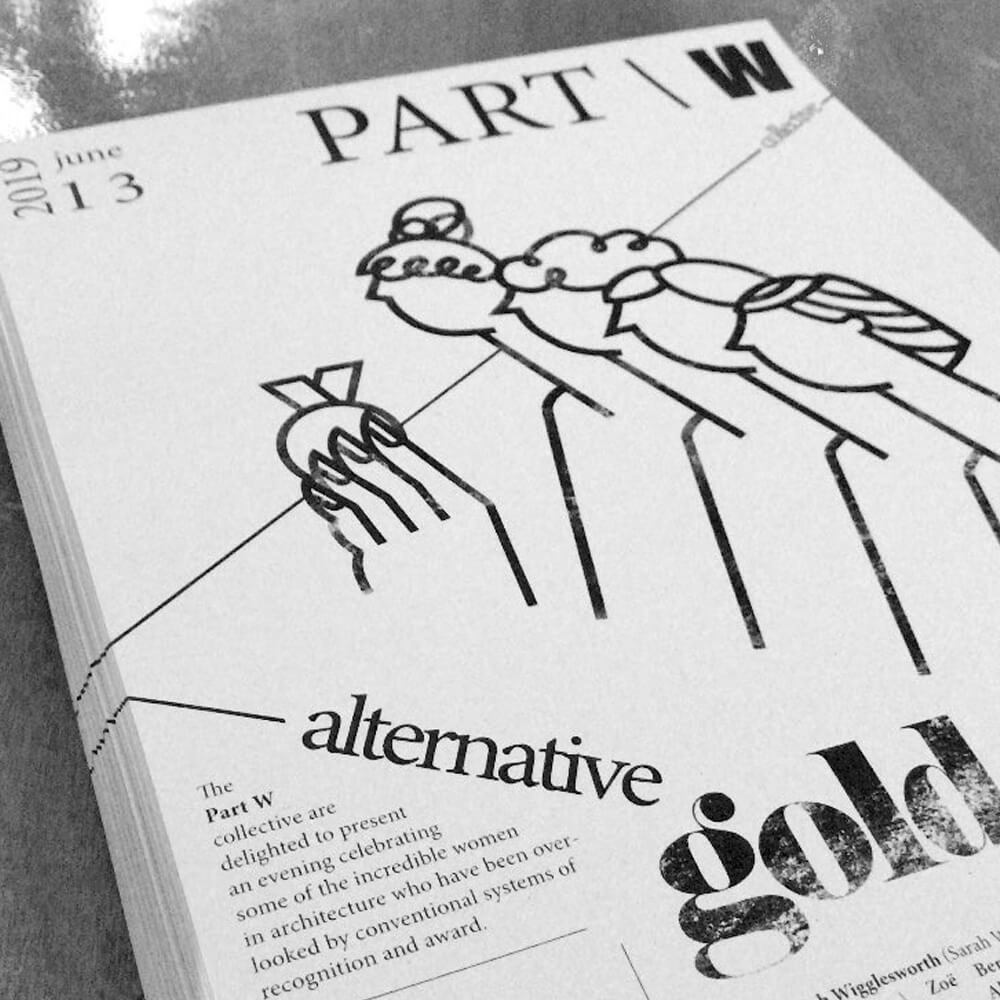Where Design Meets High Fashion: Carl Gerges

As an architect, photographer, composer, and member of the giant Lebanese rock band Mashrou’ Leila, Carl Gerges can be deemed a true multi-hyphenate. His latest venture tests the waters of high fashion: this past April, Gerges collaborated with Bottega Veneta in Dubai for a three-night event, which featured a live performance. He was tasked with designing a space that drew upon both Middle Eastern design and the iconic Italian brand’s identity. Born in Beirut, Gerges tells me that he always grew up with an affinity for building things, recalling the toy models he used to tinker with when he was young. In 2008, he co-founded his band while studying architecture at the American University of Beirut. He officially launched his studio, Carl Gerges Architects, in March 2020.
FRONTRUNNER speaks Gerges about his most recent project with Bottega Veneta and beyond.

12-14 April, 2022
Photo credit: Bottega Veneta
You have so many different creative processes. How do you keep your architectural work separate from your other creative practices, like music and photography? How do you connect them, especially during your recent collaboration with Bottega Veneta?
I work in an industry where so many different worlds intersect. Even if I wasn’t fully conscious of it, music, art and architecture have always been inextricably intertwined during my life. Rather than trying to separate these disciplines, when I created Carl Gerges Architects, I naturally approached my projects in a theatrical way, as if they were a series of moments rather than a series of spaces. My collaboration with Bottega Veneta was the perfect way of linking these passions as a means to push forward a community of artists and thinkers in an architectural intervention. Based around the Arabic term majlis (symbolising gathering and togetherness) the space I designed has elements from a traditional conversation pit, interwoven with modern-day conversations and settings.
And you obviously did that with the green thematics, which is heavily associated with the brand’s contemporary image.
Exactly, the idea was to integrate a green square – inside the cubic venue – emphasising the square within a square structure and creating a subtle arabesque pattern.
How else did you incorporate the brand identity? I know that Daniel Lee just left and the creative direction got switched over to Mattieu Blazy, so what was it like working with Bottega during this turnover?
I worked very closely with the Bottega Veneta team and with the head of worldwide events and partnerships, Alexandre-Camille Removille. It was a smooth process that felt very natural. Inspired by the brand’s fabric that is both ancestral and innovative, my intervention presented a theatrical space that paid tribute to Italian architecture whilst reflecting the hospitality, warmth and colloquialism of a local gathering. The seats were made out of this beautiful Bottega Veneta fabric. It was important to add this refined layer where people would be seated; it added texture and delicacy to the space. The speaker towers around the conversation pit were also custom designed.
They’re massive too!
Yes, they were massive! They were a crucial element of the scenography, not only because of the amazing sound quality that they produced, but also because of their monumentality – they balanced the empty green cube. They were also a hint at the old Hi-Fi systems that we found in the 60’s homes.
Apart from the design aspects, the space itself acted as a meeting place for a lot of different talent. Did you have a favorite act (if you’re allowed to say whether you did)?
As the pop-up was happening during the holy month of Ramadan, we hosted poets, artists and intellectuals from eclectic backgrounds: rooted in both traditional and contemporary disciplines. From the Yemeni-East African visual storyteller Shaima Al-Tamimi (who screened her short film Don’t Get Too Comfortable, a letter to her late grandfather contemplating their pasts and future as Arabs in the diaspora), to Asma Al-Badawi (a Sudanese-British spoken word poet, known for advocating for inclusivity and diversity in women’s sports), to Mustafa the Poet (a Canadian poet/songwriter whose genre-defying work surrounds his life, loss, and identity as a Black Muslim artist) and finally Solemann Haddad (a Syrian Dubai-based chef who curated the culinary experience for our guests.) I didn’t really have a favorite performance. The event was over the course of three days. The first night was intimate, we had a controlled amount of guests, the artists were getting comfortable, the conversations were very personal. For the third night, we decided to open up the space to a hundred people, the dynamic really changed, It was a completely different experience. When you have more people occupying different areas of a space the emotions in the space change and this is where it gets interesting.
With all of that said, was it a gratifying experience? Do you recommend that Bottega continues to do this in the future?
It was very gratifying that our collaboration got the attention it deserved, we got a lot of press and a lot of exposure. It was quite a unique event for the region because it was not centered around showcasing products or merchandise. Instead, it focused on real people and real stories. We received a lot of positive feedback, Bottega even decided to take this concept further and travel with it to cities such as Tokyo, São Paulo, Shanghai.
You’re the designer to helm the travelling project, so congratulations! Apart from Bottega, what kinds of things, architecture and otherwise, do you want to do in the future?
Thank you! My dream is to someday design cultural or wellness projects. In contrast to residential and commercial projects, these projects have something transcendent about them. The quality of these spaces, their proportions, their form and function, allow people to access states of being or understanding that are spiritual – feelings such as calmness, awe, wonder, enlightenment, wellbeing, wholeness, joy.









Responses